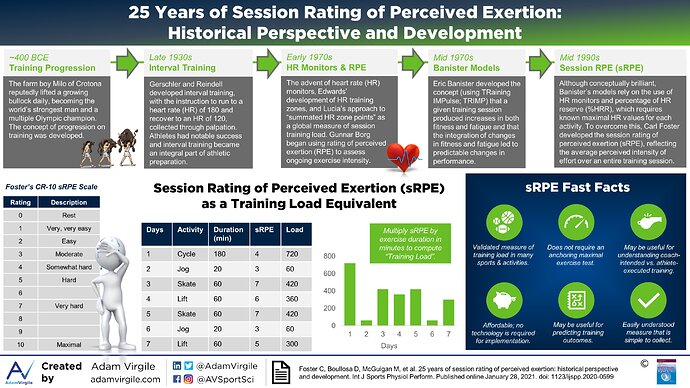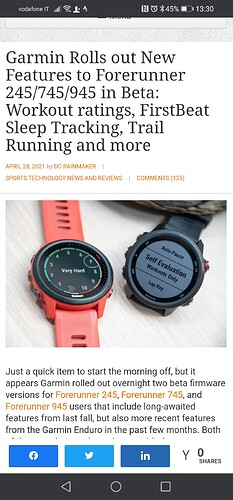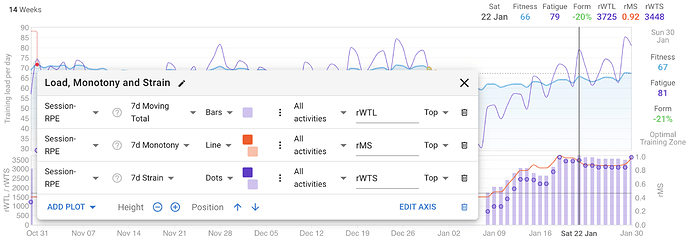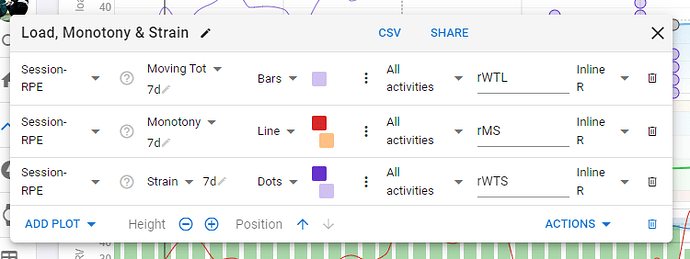David and I briefly discussed the possibility of bringing in the classic load variable expressed from Foster’s 10-pt RPE scale. RPE rating is already available within ICU. So why not do something useful with it? Currently, its a static variable ; under the charting options in Compare tab, you have the option to chart RPE but it looks like the tool simply summates RPE across activities over a weekly period which makes little sense.
Just want to spell out the computation of RPE based load and stress based on Carl Foster’s research (see references) :
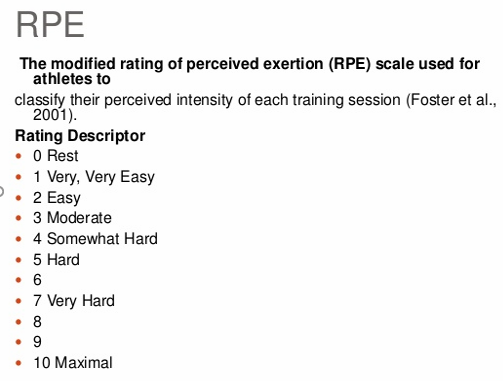
Activity Training Load (rATL) = Session RPE x Duration in Minutes
Here activity is specific to biking, running, skiing, lawn mowing, wall painting… whatever it is you do.
Session based RPE load is then tallied up for the week for a weekly load metric.
Weekly Training Load (rWTL) = ∑ Activity Training Loads
A weekly monotony score is calculated that expresses the daily variation in training load. Higher monotony means successive workouts resemble each other more and more and may signal the chance of over-reaching or improper loads.
Monotony Score (rMS) = Mean Activity Training Load / S.D Activity Training Loads
where S.D = Std. deviation.
Weekly RPE based strain is a product of weekly monotony and weekly training load. Foster et.al termed “strain” as distinguished from stress. Dr. Seiler did a Youtube video recently defining what is the difference in these two terms for those interested (see References).
Weekly Training Strain (rWTS) = Monotony Score x Weekly Training Load
Then one can chart loads and strain week-by-week for specific periods or macro-cycles in the “Compare” tab.
This could be attractive as a third option for athletes who are training neither with power nor heart rate. Or simply a way to track the subjective “psychophysiological” component of load against the more objective externally applied load. Might be useful for those trying to achieve “polarization” in their training to be able to monitor monotony and loads.
Couple of other notes :
-
I understand ICU’s RPE scale within each activity is based on Strava’s and differs from Foster’s 10-pt scale. For example, a hard is a “7” in ICU while its a “5” in Foster’s scale. So some thought needs to be given to this for those familiar with the Foster’s scale.
-
RPE rating is easier for a continuous workout but run the risk of being somewhat blunt for intermittent workouts. These workouts would contain several passive/active rest periods. Either way, that’s left to the user to figure out; IMO as long as they are honest with themselves, its fine. Some guidance on this crucial topic is below in my Youtube video.
-
Rating should ideally be done within a window of 10-15 minutes after completing workout to be an effective rating. Rating will be a conscious effort from user… Those activities without a rating will not be brought into the calculation data pool.
Thanks.
REFERENCES
Foster, C. (1998). Monitoring training in athletes with reference to overtraining syndrome. Medicine and Science in Sports and Exercise. 30(7): 1164-1168.
Session RPE Application 3-Part Series : https://youtu.be/Qmk4ABC_lkU
Load, Stress & Strain : https://www.youtube.com/watch?v=BwL9ehjgCsQ
